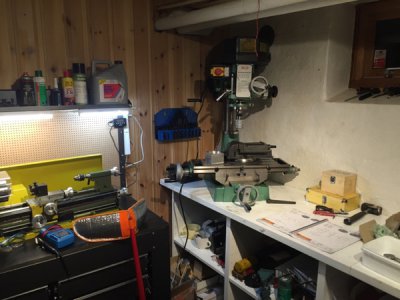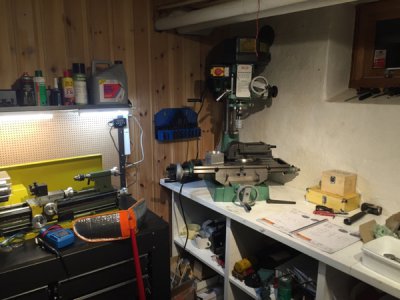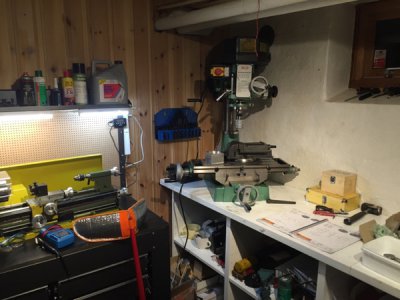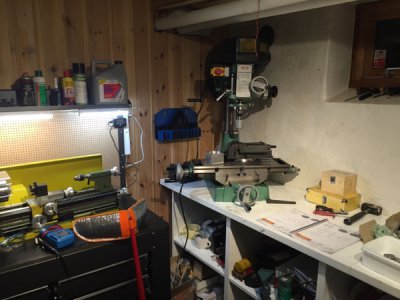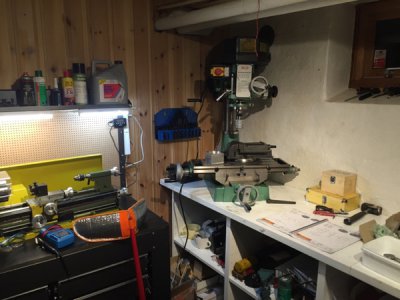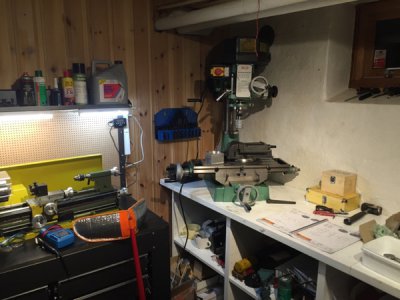Hi everybody,
I have just finished getting my new mill indtalled in my little shop.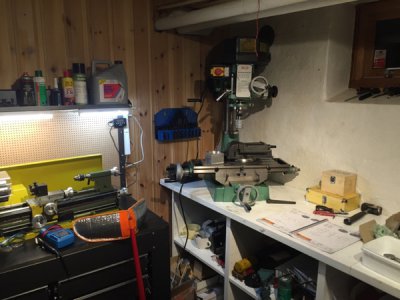
I apologise to most of you for using metric measures, but I live in Oslo, Norway and do everything in metric, although I can get by in inchces and stuffbif I have to
Now before I go messing stuff up I have a few questions.
I have an er 32 collet chuck and a new set of end mills from 4 mm to 20mm diameter (HSS endmills with that hard coating that makes them look yellowish gold, TiNi ?), both 2 and 4 flute types, spiral flutes, not straight) My mill can operate from 80 to just over 2000 rpm.
It has a 1,1 kw motor ( it is also labeled 1.5 hp but that is a fair bit more than 1,1 kw so I am assuming the lower number).
Now I will be milling aluminium and mild steel mostly.
Could someone explain the basics around calculating suitable rpms for the various sizes of end mill?
I have seen a lot of info regarding chip loading and stuff, but I dont understand it all.
I would like to be able to work the numbers for myself, but I need some help with how to do that.
I would guess that the softer the metal the higher the rpm for a given diameter of end mill?
Also higher rpm for smaller endmills in the same material? This would keep the speed of the cutting edge through the material similar, which I am led to belive is a good thing.
Look forward to hearing from you all
Sent from my iPhone using Tapatalk
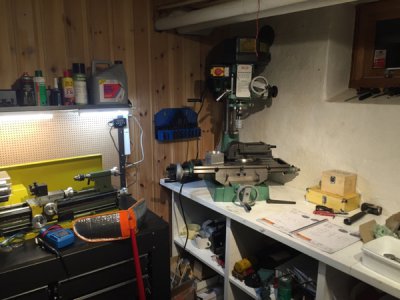
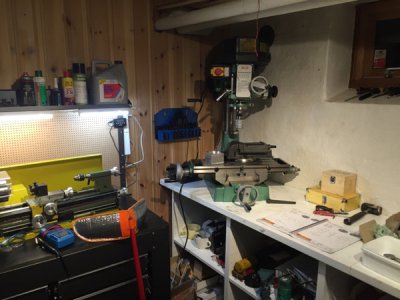
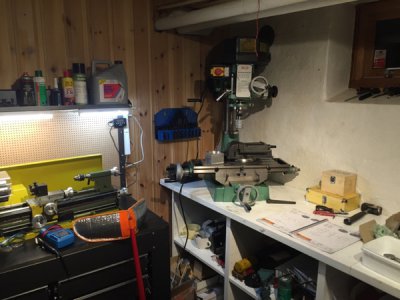
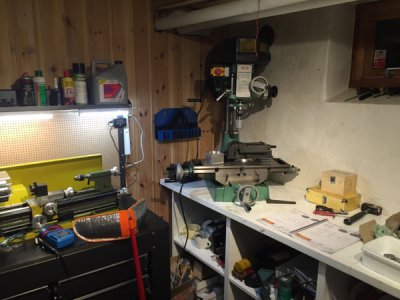
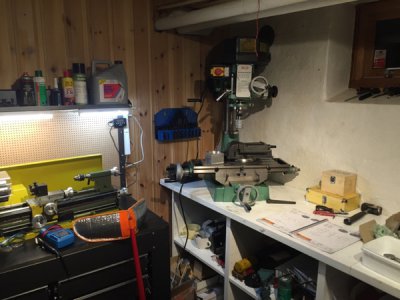
I have just finished getting my new mill indtalled in my little shop.

I apologise to most of you for using metric measures, but I live in Oslo, Norway and do everything in metric, although I can get by in inchces and stuffbif I have to
Now before I go messing stuff up I have a few questions.
I have an er 32 collet chuck and a new set of end mills from 4 mm to 20mm diameter (HSS endmills with that hard coating that makes them look yellowish gold, TiNi ?), both 2 and 4 flute types, spiral flutes, not straight) My mill can operate from 80 to just over 2000 rpm.
It has a 1,1 kw motor ( it is also labeled 1.5 hp but that is a fair bit more than 1,1 kw so I am assuming the lower number).
Now I will be milling aluminium and mild steel mostly.
Could someone explain the basics around calculating suitable rpms for the various sizes of end mill?
I have seen a lot of info regarding chip loading and stuff, but I dont understand it all.
I would like to be able to work the numbers for myself, but I need some help with how to do that.
I would guess that the softer the metal the higher the rpm for a given diameter of end mill?
Also higher rpm for smaller endmills in the same material? This would keep the speed of the cutting edge through the material similar, which I am led to belive is a good thing.
Look forward to hearing from you all
Sent from my iPhone using Tapatalk







